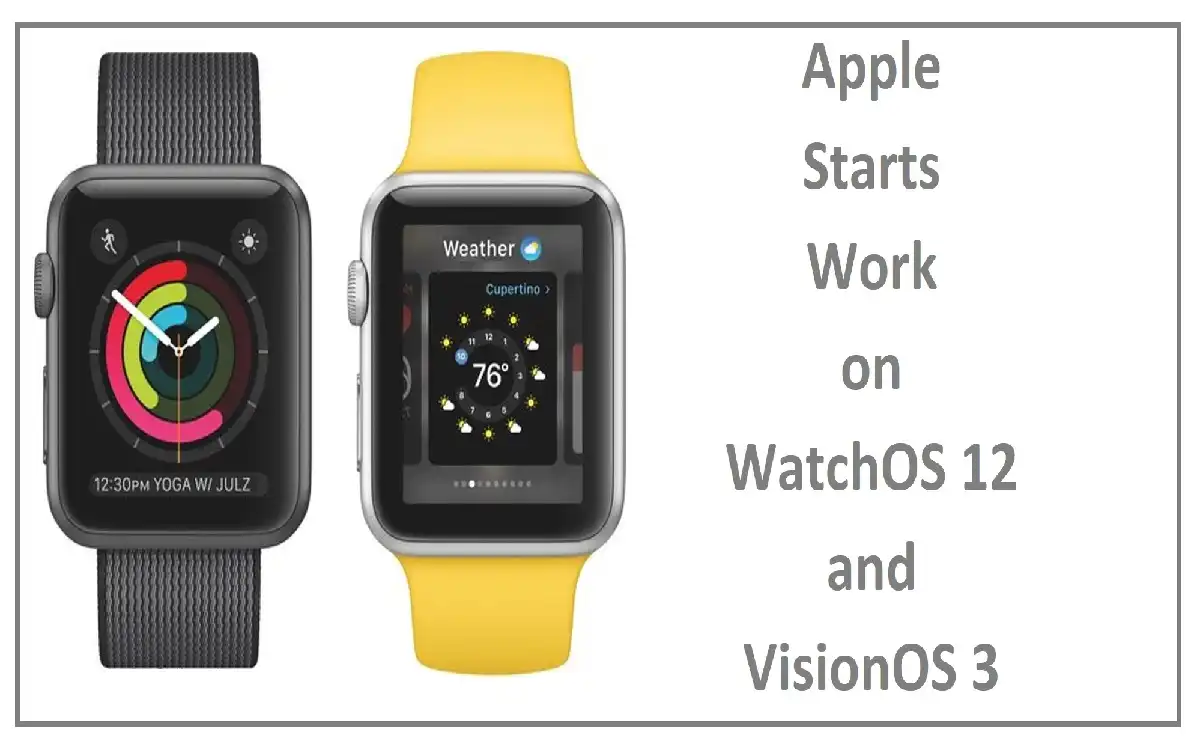Introduction
As we eagerly anticipate the release of iOS 18, macOS 15, watchOS 11, and visionOS 2, reports suggest that the tech giant is already setting its sights on the future. According to Bloomberg’s Mark Gurman, Apple has begun work on watchOS 12 and visionOS 3, codenamed “Nepali” and “Discovery” respectively. This article examine into the implications of this early development, potential features, and what it means for the future of Apple’s ecosystem.
Recent Released: What Is iPadOS 18 Tab Bar Apps And How To Use?
The Development Cycle: A Look Behind the Curtain
Early Stages of Innovation
While it may seem premature to discuss software versions that are still years away from release, this approach is par for the course in the tech industry. Apple’s forward-thinking strategy ensures that they remain at the forefront of technological advancement.
Reasons for Early Development
- Hardware-Software Integration: New hardware products slated for 2025 require compatible software for testing.
- Long-term Planning: Early development allows for more comprehensive feature sets and refined user experiences.
- Market Competition: Staying ahead of competitors by anticipating future trends and user needs.
The Codename Game
Apple’s tradition of assigning codenames to its projects adds an air of mystery and excitement to the development process. Let’s explore the potential significance of the chosen codenames:
watchOS 12 – “Nepali”
- Possible connection to rugged, outdoor-focused features
- Emphasis on elevation tracking or mountaineering applications
visionOS 3 – “Discovery”
- Hints at enhanced exploration and interaction within virtual environments
- Potential focus on educational or scientific applications
watchOS 12: Elevate the Wearable Experience
While specific features for watchOS 12 remain unknown at this early stage, we can speculate on potential improvements based on current trends and user feedback.
Potential Features:
Enhanced Health Monitoring
- Advanced sleep tracking algorithms
- Stress management tools
- Personalized fitness recommendations
Improved Battery Life
- Optimized power management
- New low-power modes for extended use
Expanded App Ecosystem
- Easier development tools for third-party apps
- Improved complications for watch faces
Enhanced Siri Integration
- More natural language processing
- Expanded offline capabilities
Customization Options
- New watch face designs
- Improved personalization features
visionOS 3: Redefine Spatial Compute
The Vision Pro headset represents Apple’s bold entry into the world of mixed reality. With visionOS 3, we can expect significant advancements in spatial computing and immersive experiences.
Potential Features:
“Apple Intelligence”
- Advanced AI integration for more natural interactions
- Predictive capabilities for user preferences and behaviors
Enhanced Gesture Controls
- More precise and intuitive hand tracking
- Expanded range of recognized gestures
Improved Visual Fidelity
- Higher resolution displays
- Enhanced depth perception and 3D rendering
Expanded App Ecosystem
- More developer tools for creating immersive experiences
- Integration with existing iOS and macOS apps
Social Features
- Improved avatar system for virtual meetings
- Collaborative tools for shared virtual spaces
The Importance of Long-term Development
Apple’s approach to software development is a testament to their commitment to innovation and user experience. By starting work on future versions well in advance, the company ensures:
- Thorough Testing: Ample time to identify and resolve potential issues.
- Feature Refinement: Opportunity to perfect new features and technologies.
- Hardware Compatibility: Seamless integration with upcoming device releases.
- User Feedback Integration: Ability to incorporate user suggestions from previous versions.
Table: Apple’s Software Development Timeline
| Year | watchOS | visionOS | iOS | macOS |
| 2024 | watchOS 11 | visionOS 2 | iOS 18 | macOS 15 |
| 2025 | watchOS 12 “Nepali” | visionOS 3 “Discovery” | iOS 19 | macOS 16 |
| 2026 | watchOS 13 | visionOS 4 | iOS 20 | macOS 17 |
Challenges and Considerations
While early development offers numerous advantages, it also presents unique challenges:
Balance Innovation and Stability
- Introducing cutting-edge features while maintaining system reliability
User Privacy and Security
- Ensuring robust protection of user data, especially with advanced AI integration
Developer Adoption
- Encouraging third-party developers to embrace new technologies and platforms
Hardware Limitations
- Designing software that can push the boundaries of existing hardware while remaining compatible with older devices
Managie User Expectations
- Balancing the excitement of new features with the realities of development timelines
The Road Ahead: Implications for Apple’s Ecosystem
As Apple continues to expand its product lineup and refine its software offerings, the interplay between different devices and operating systems becomes increasingly important. The development of watchOS 12 and visionOS 3 hints at a future where wearables and mixed reality devices play an even more central role in our digital lives.
Potential Ecosystem Advancements:
Seamless Device Integration
- Enhanced continuity features between Apple Watch, Vision Pro, iPhone, and Mac
Shared AI Capabilities
- “Apple Intelligence” potentially extending across all devices
Cross-platform App Development
- Easier creation of apps that work seamlessly across multiple Apple platforms
Health and Fitness Focus
- Expanded health monitoring and fitness features leveraging data from multiple devices
Augmented Reality Experiences
- Integration of AR features across watchOS and visionOS
Conclusion
While the specifics of watchOS 12 and visionOS 3 remain shrouded in mystery, Apple’s early development efforts signal an exciting future for the company’s software ecosystem. As we eagerly await the release of current software versions, it’s clear that Apple is already laying the groundwork for the next generation of innovative features and experiences.
The codenames “Nepali” and “Discovery” hint at a focus on outdoor adventures and immersive exploration, potentially revolutionizing how we interact with our wearables and mixed reality devices. As Apple continues to push the boundaries of what’s possible, users can look forward to more seamless integration, advanced AI capabilities, and enhanced experiences across all their devices.
While it’s important to temper our expectations with the realities of software development, Apple’s forward-thinking approach ensures that they remain at the forefront of technological innovation. As we move into this exciting new era of computing, one thing is certain: the future of Apple’s software ecosystem is brighter than ever.


